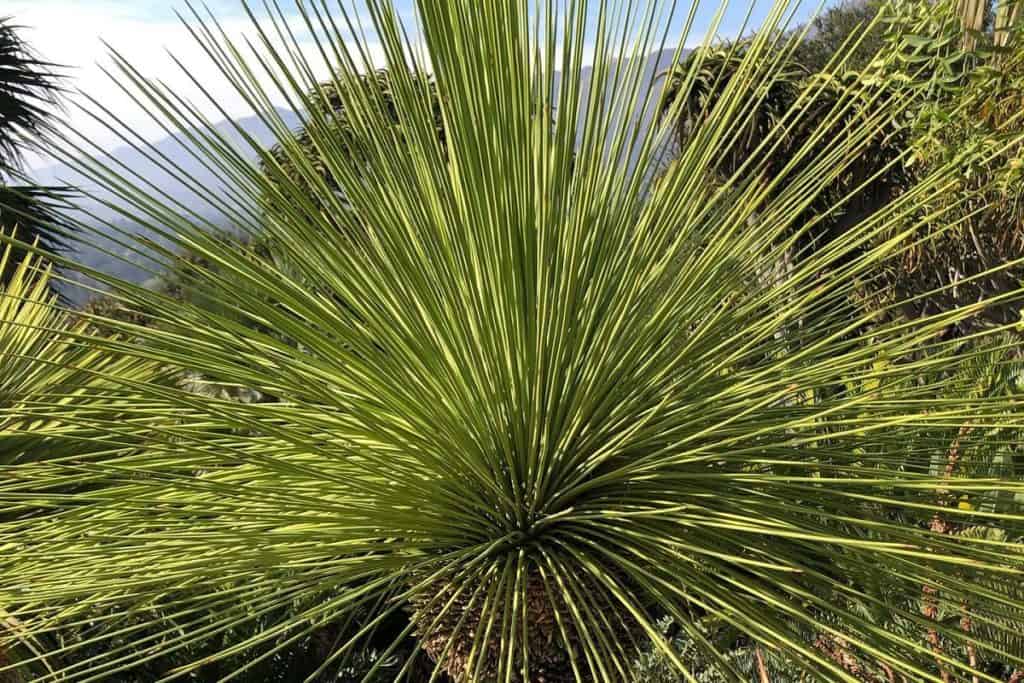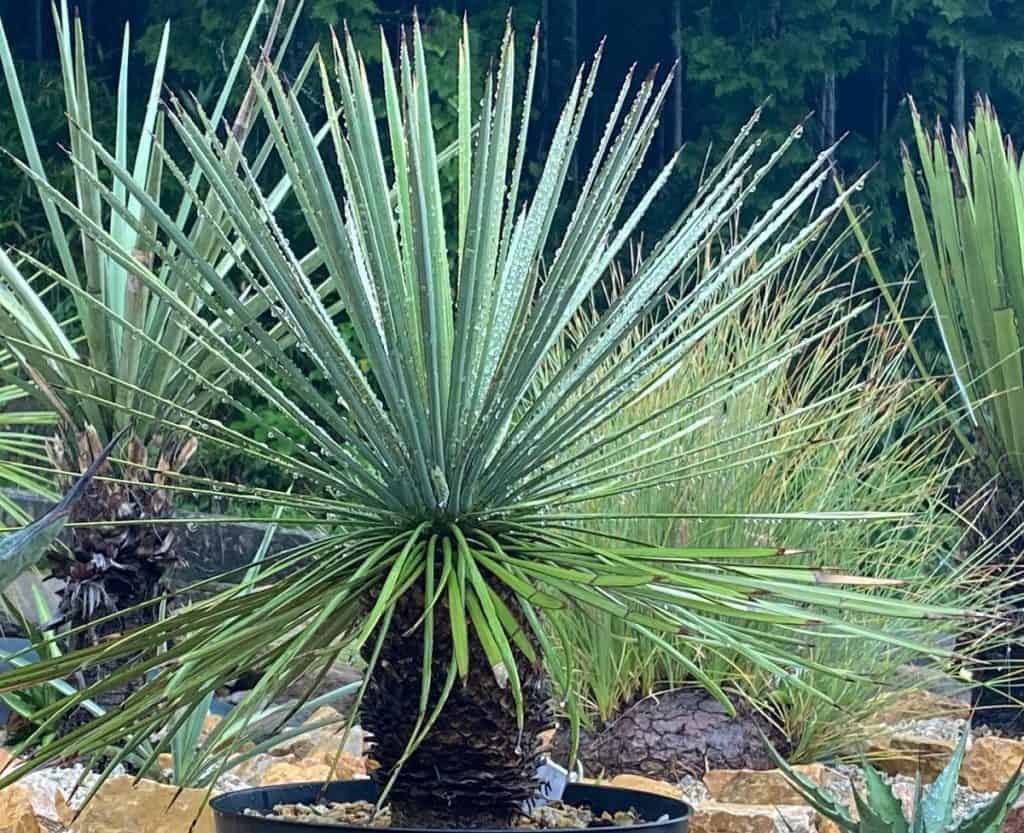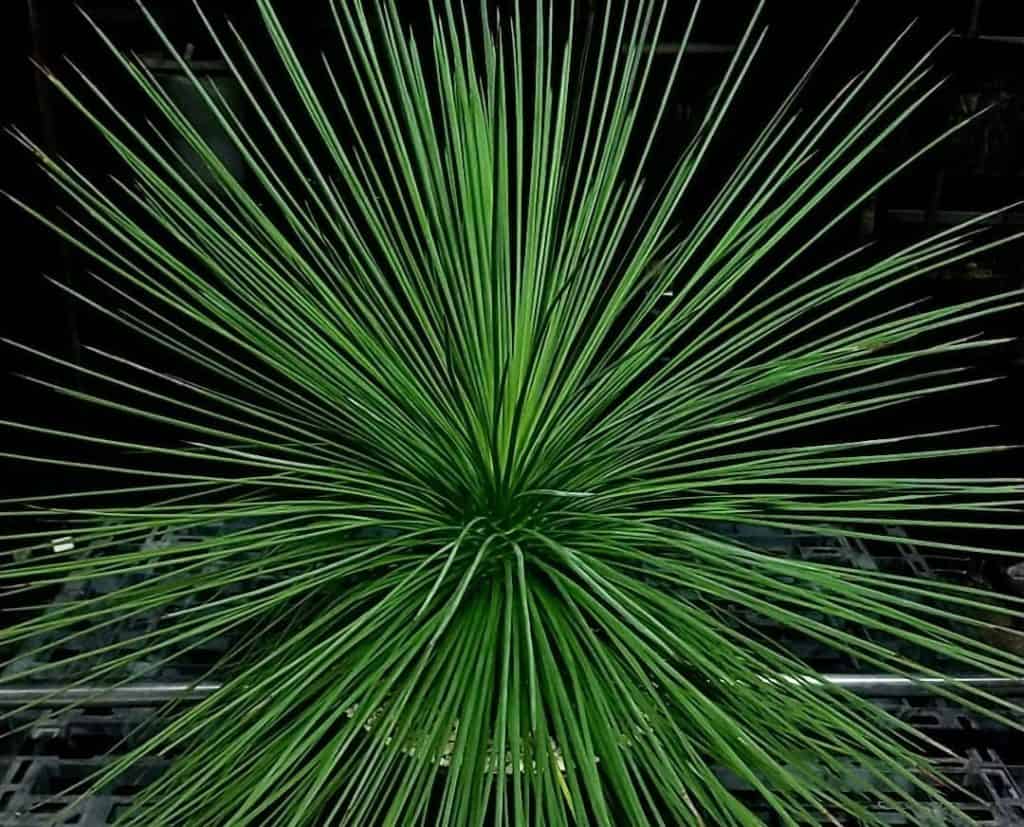Yucca queretaroensis: The Unsung Beauty of the Sierra Madre Occidental
A rare and elusive desert dweller, almost mythical in its resilience. Yucca queretaroensis defies the harsh conditions of its environment with grace and beauty. This extraordinary succulent, native to Mexico’s rugged Sierra Madre Occidental mountain range, is about to captivate your curiosity and steal your heart.
Intrigued? Then keep reading to uncover the secrets of caring for this remarkable plant and adding it to your collection…

Contents
About Yucca queretaroensis
Belonging to the Asparagaceae family, Yucca queretaroensis goes by other names like the biconvex yucca, Queretaro yucca, or denticulate-leaf yucca. It bears a single trunk-like stem surrounded by brown, dried leaves. But from the top of this stem, multiple thin, long, and narrow leaves grow in a striking rounded rosette, creating a desert sculpture like no other.
Related Post:
61 Different Types Of Yucca [With Pictures]
How to Care for Yucca queretaroensis
Light
Yucca queretaroensis thrives in full sun, soaking up those golden rays for up to 8 hours a day. If you’re growing it indoors, mimic its desert home by placing it near a sunny window or using a grow light. Just remember to provide some afternoon shade if you live in a hot climate.
Water
As a succulent, Yucca queretaroensis is a water-storing pro. But don’t let that fool you – it still needs a proper watering routine. Soak the soil thoroughly, and then let it dry out completely before watering again. In the summer, you might need to water more frequently than in the cooler months. But overwatering is a big no-no, as it can lead to root rot and other issues.

Soil
This desert beauty likes it well-drained and coarse. Use a succulent potting mix and add peat, moss, sand, perlite, and pebbles to create the perfect texture. Organic matter is also a welcome addition to the soil party. Aim for a slightly acidic to neutral pH, and your Yucca queretaroensis will be as happy as a cactus in a desert.
Fertilizer
A balanced, slow-release fertilizer is the way to go. Look for one that can handle all your plant babies, and apply it at the start of the growing season (usually spring). This will give your Yucca queretaroensis the nutrients it needs to thrive without overwhelming it.
Temperature and Humidity
Yucca queretaroensis is a warm-climate lover, hardy between USDA zones 9a and 11b. In the winter, it can tolerate temperatures down to around 18°F (around -8°C), but ideally, you’ll want to keep it above freezing at 32°F (0°C). If the mercury dips too low, bring your plant indoors and cut back on watering to let it rest during its dormancy.
As for humidity, this desert native prefers drier conditions, so no need for a humidifier unless you live in an excessively dry environment.

Pests and Problems
Root rot is the biggest concern for Yucca queretaroensis, but it’s easily avoidable with proper watering practices. As for pests, scales and bugs might occasionally come knocking, but you can show them the door with insecticidal soap, essential oils, or good old-fashioned dish soap.
Pruning
Yucca queretaroensis is a low-maintenance beauty when it comes to pruning. As the plant matures, older leaves will naturally shed, so there’s no need for excessive trimming. However, if you spot any dead or dying leaves, snip them off with clean shears to keep your plant looking its best.
Potting and Repotting
This succulent will happily call any well-draining pot or container home, whether it’s ceramic, terracotta, or plastic. Just make sure it has a drainage hole to prevent waterlogging. When repotting, choose a slightly larger pot and refresh the soil mix. If your plant is already a big guy, simply replace the top layer of soil.
Yucca queretaroensis Propagation Methods
Yucca queretaroensis can be propagated from seeds or stem cuttings, giving you the chance to multiply this desert gem.
For seeds:
- Lightly sand the seeds to help them germinate
- Sow them a couple of inches deep in a pot with well-draining soil
For stem cuttings:
- Take cuttings from a mature plant and let them callus over for a few days
- Plant the calloused cuttings in a pot with well-draining soil
- Care for the new plants as you would the parent plant
With a little love and the right conditions, you’ll soon have a whole family of Yucca queretaroensis to admire and enjoy!
